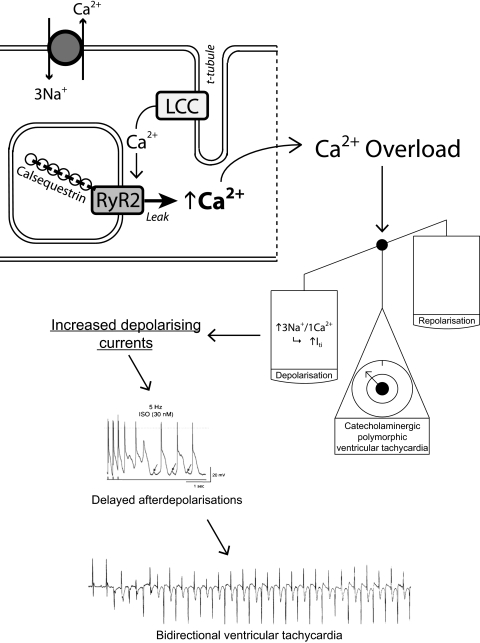Figure 5.
Mechanisms of arrhythmogenesis in catecholaminergic polymorphic ventricular tachycardia from animal models. The genetic mutations result in an increase in cytosolic Ca2+ which in turn causes the scales to tip in favour of depolarising currents due to the electrogenic nature of the Na+/Ca2+ exchanger. If sufficient, this may lead to triggered activity in the form of delayed after-depolarisations. The lowest trace shows an ECG with the initiation of a bidirectional ventricular tachycardia recapitulating the clinical phenotype. All traces shown are from mice. Adapted in part from Cerrone et al47 and Cerrone et al,48 with permission.

